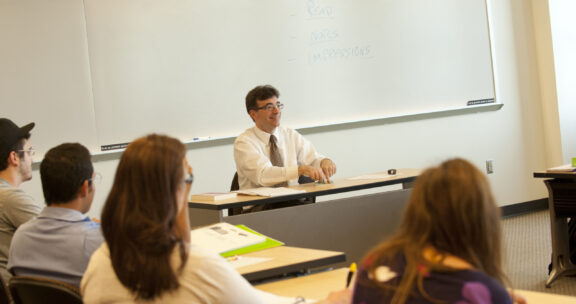
Not sure where to start? Request your viewbook!
Browse Events or Watch a Virtual Info Session
Ready to take the next step? Sign up for pre-transfer advising.
History
Apply For ProgramFast Facts
- Offers one major and two minors
- One of the most versatile degrees
- Builds skills in decision-making, problem-solving, and communication
Introduction
Earn your bachelor’s degree in history at UMBC-Shady Grove to chart your future through the exploration of the past. Our unique model helps you save on tuition while earning the same UMBC degree as four-year students. You’ll graduate with transferable skills in research, planning, critical thinking, and problem solving.
UMBC’s history program believes that the study of history is vital for shaping better communities tomorrow. You’ll have the opportunity to work closely with faculty and to pioneer student-led projects. You will also have the option of completing a minor in public history, which puts special emphasis on applied learning and internships.
Steps to Your Degree
Before Transfer
Prerequisites
The history department strongly encourages you to complete the following prerequisites prior to transfer:
- 3 history classes at the 100- or 200-level with at least one in U.S. history and one in non-U.S. history
- English Composition
It is also recommended that you complete as many of the following courses as possible before transfer. These courses are required for graduation from UMBC and many cannot be taken at UMBC-Shady Grove:
- 3 Arts and Humanities Courses (from at least two different disciplines)
- 2 Science Courses (at least one with a lab)
- Math
- World Language Intermediate-Level (consult advisor about exceptions)
Recommended Transfer Coursework
Advising & Next Steps
All students are strongly encouraged to complete pre-transfer advising before joining us at UMBC-Shady Grove. Explore pre-transfer advising options.
You’re also welcome to contact UMBC-Shady Grove History Program Director Dr. Andrew Nolan at nolan@umbc.edu or 301-738-6182 if you have any questions about prerequisites, the program, or your future in history.
Admitted and current students should visit our advising FAQs.
Degree Requirements
Major Requirements
UMBC Graduation Requirements
- Minimum of 120 academic credits
- Minimum of 2.0 GPA
- 45 upper-level (300 & 400-level) credits
Minor Requirements
UMBC-Shady Grove offers a minor in history and a minor in public history.
Public History Minor Requirements
UMBC-Shady Grove Course Schedule
Many history majors at UMBC-Shady Grove choose to complete the public history minor to deepen their studies and gain real-world experience. The minor pairs academic learning with hands-on projects, internships, and professional skills in areas like museum studies, digital history, and historic preservation.
More About the Program
Career Opportunities
History by the numbers:
- The average annual salary for historians in the Washington, DC, area is $107,540. – Bureau of Labor Statistics, 2023
- There are 461 historical societies and organizations in the greater Washington, D.C. metro area. Combined, they employ 946 people. – Course IQ, 2023
- There are 74 museums just within Washington, D.C. – museumhack.com, 2023
Learn more about history career paths (PDF).
Faculty
 Dr. Andrew Nolan
Dr. Andrew Nolan
Program Director
Department: History
Phone: 301-738-6182
Email: nolan@umbc.edu
Office: Bldg III, Room 4155
Dr. Andrew Nolan is the History Program Director for UMBC at the Universities at Shady Grove. His teaching focuses on modern U.S. history, cultural and constitutional history, and historical writing and research methods. He is currently working on a book that explores the 1925 Scopes trial as a symbolic opening in an ongoing debate over the nature of the modern American nation. This research also resulted in an article titled “Making Modern Men: The Scopes Trial, Masculinity and Progress in the 1920s United States,” which he published in the April 2007 edition of Gender & History .
He is currently focusing on developing the program at Shady Grove, which shepherds students through the third- and fourth-years of their college careers and provide them with the UMBC history degree grounded in critical thinking, analytical reading, and clear writing. In his spare time, he will continue to research his next project, which explores popular representations of human evolution—and dinosaurs—in U.S. culture.
Additional Faculty
Program News and Highlights
Alumni Spotlight

Leigh Robertson '22
History
"How can we know who we are and try to have a vision for where we're going without knowing where we've been?"


Isabella Hlavacek '19
History
“I completed an internship at an organization called Heritage Montgomery in Germantown, which is a non-profit organization that oversees historic properties, old spaces, natural resources, etc. in Montgomery County. The point is to foster pride of place in MoCo and secure the legacy of these places.”
B.A. in History Information Request